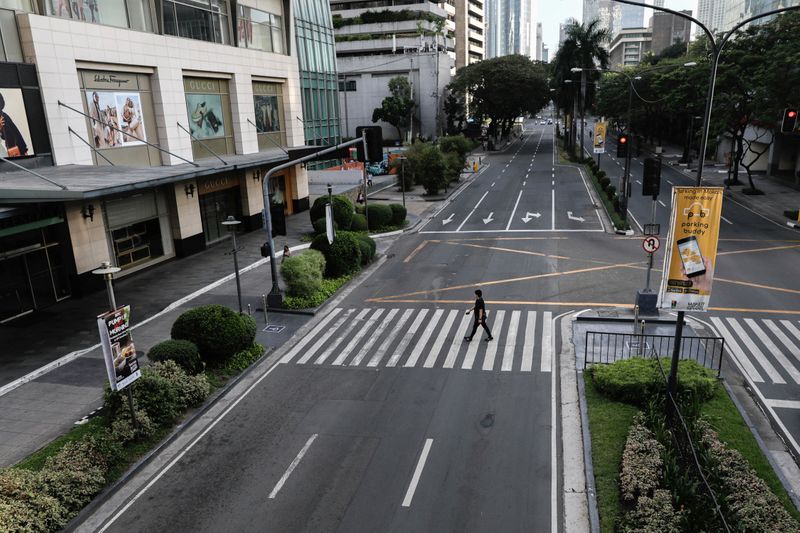MANILA (Reuters) – The Philippine economy’s contraction this year could be greater than earlier predicted as measures to contain the coronavirus outbreak weigh on domestic demand and investments, and the budget deficit is expected to rise sharply in 2020.
Gross domestic product was expected to decline 2% to 3.4% this year, the first contraction in more than two decades, and worse than the government’s forecast of -1.0% to 0.0% growth in March, said an inter-agency body in charge of setting the government’s macroeconomic goals and policies.
This year’s budget deficit is estimated to reach 1.56 trillion pesos ($31.04 billion) or 8.1% of GDP, a far bigger shortfall than the government’s 5.3% forecast in March, and more than double its original estimate of 3.2%
“These revised assumptions will also allow the government to operate with a more realistic and prudent fiscal stance as it flags the downside risks to the economy and the fiscal programme for the rest of the year,” the Development Budget Coordination Committee (DBCC) said in a statement on Wednesday.
The Southeast Asian country, which had been one of Asia’s fastest-growing economies before the pandemic, is on the edge of a recession after growth unexpectedly shrank 0.2% in the first quarter, dashing forecasts for 3.1% growth.
Economists believe GDP will see a steeper drop ahead as an extended lockdown in the capital takes a heavier toll on domestic demand, building the case for more monetary policy easing in the coming months.
The Philippines on Tuesday announced that its capital, Manila will remain under lockdown up to the end of May, extending one of the world’s strictest and longest community quarantines to try to contain the outbreak.
The government has begun to ease restrictions slowly in what it considers “low-risk areas” to try to restart the economy, and allow people to go back to work.
It is implementing a 1.4 trillion peso relief programme to mitigate the economic impact of the COVID-19 outbreak, that has infected more than 11,000 people in the country and killed more than 700.
The Philippine government said it expects a rebound in 2021, with the economy growing between 7.1% and 8.1%, supported by an economic recovery programme to cushion the impact of the pandemic.
(Reporting by Neil Jerome Morales and Karen Lema; Editing by Jacqueline Wong)



















